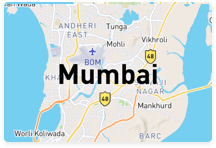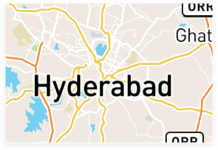Estimated Fees in India
₹ 400 to ₹ 600 per hour
Find Clay Modeling Classes Fees in your locality
Making miniatures, Idea generation, Sketching and Modelling, creative Sculpting, Painting, Watercolor, costume, Masks, photography, product Installation, Timelines, problem solving and Technical solutions.
I am BFA\Fine Arts graduates ( Abhinav Kala Mahavidyalay, Pune ) and working in creativity field from last 15 years in Mumbai. Apart from "Art Teacher" I have experience of Sculpture \Clay Modeling & Molding. I am also working as Designer which includes Visual designing and storyboard as well I am a Fine Artist and working in almost all mediums. People\Parents\Students who have interest in Arts and aspire to learn and develop creativity are welcome to consult. My objective would be to benefit you (at the best) from my diverse experience in Art\Creativity field.
Post your Learning Need
Get customized quotes and responses from Tutors
Choose & Learn from Tutor of your choice

₹ 400 to ₹ 800

₹ 500

₹ 400 to ₹ 500

₹ 400 to ₹ 500

No data available

No data available
Answered on 02 Jan Learn Art and Creativity/Clay Modeling

Sadika
Clay models are used in the automotive industry and other design fields for various purposes throughout the product development process. Here are some of the key uses of clay models:
Design Evaluation:
Form Exploration:
Ergonomics and Human Interaction:
Wind Tunnel Testing:
Presentation to Stakeholders:
Decision Making:
Photorealistic Rendering:
Collaboration and Communication:
Prototype for Production:
While digital design tools and virtual simulations have become more prevalent, clay models remain a valuable part of the design process, offering a hands-on, physical representation that complements the capabilities of digital design.
Answered on 02 Jan Learn Art and Creativity/Clay Modeling

Sadika
The process of hardening modeling clay depends on the type of clay you are using. There are various types of modeling clay, including air-dry clay and oven-bake clay (polymer clay). Here are instructions for hardening each type:
Sculpt Your Object:
Air-Dry Naturally:
Turn and Rotate:
Check for Dryness:
Sculpt Your Object:
Preheat the Oven:
Prepare Baking Surface:
Place the Object:
Baking Time:
Cooling:
Follow Manufacturer's Instructions:
Ventilation:
Post-Hardening Finishing:
Keep in mind that each type of clay has its own characteristics, and the hardening process may vary. Always refer to the instructions on the clay's packaging or the manufacturer's guidelines for best results.
Answered on 02 Jan Learn Art and Creativity/Clay Modeling

Sadika
Baking modeling clay depends on the type of clay you are using. There are two main types: air-dry clay and oven-bake clay (also known as polymer clay). Here are instructions for baking each type:
Sculpt Your Object:
Drying Time:
Check for Dryness:
Sculpt Your Object:
Preheat the Oven:
Prepare Baking Surface:
Place the Object:
Baking Time:
Cooling:
Temperature Control:
Ventilation:
Avoid Over-baking:
Post-Baking Finishing:
Always refer to the specific instructions provided by the manufacturer of the clay you are using. Different brands and types of clay may have slightly different baking requirements.
Have a question about Clay Modeling Classes Fees? Ask your question and get answers from top Tutors.
Create your FREE UrbanPro profile and grow your income!
Find best tutors for Clay Modeling Classes by posting a requirement.

Get started now, by booking a Free Demo Class